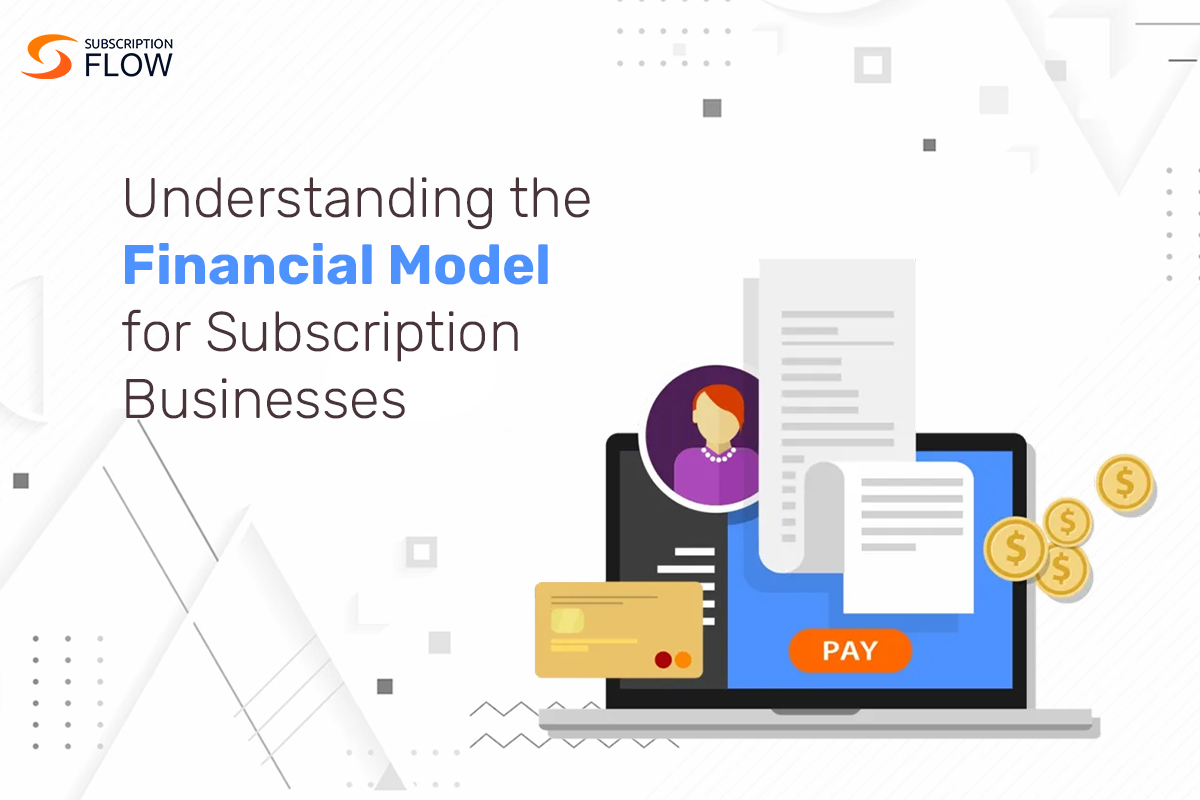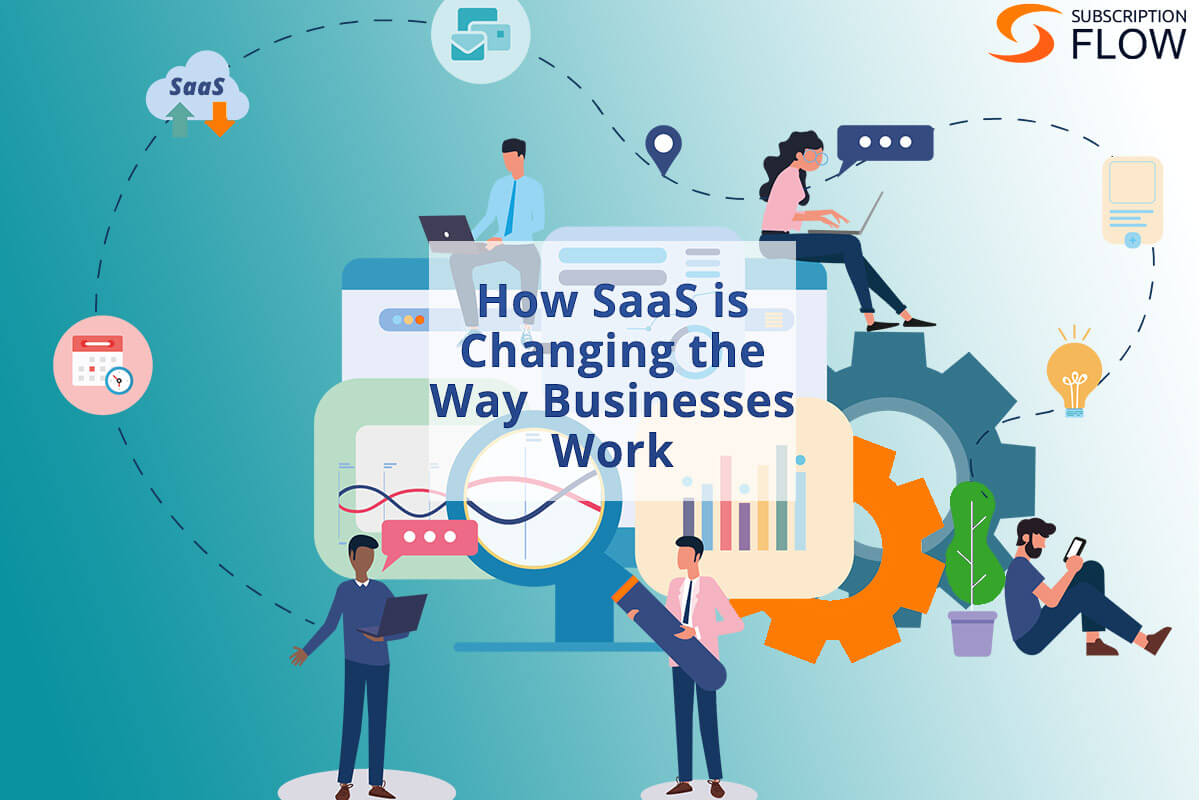
Understanding the Financial Model for Subscription Businesses
Take a look at any modern SaaS company, and you’ll see that they use a subscription-based business model. With subscription-based payment plans quickly replacing the conventional software license method, modern SaaS enterprises must make many operational modifications to match this shift in how customers expect to pay for products and services.
With both B2C and B2B industries growing more customer-centric, the subscription model is changing to accommodate such developments, where it becomes easy for customers to find and try new software solutions.
A typical SaaS subscription model also enables businesses to generate predictable MRR (monthly recurring revenue) and ARR (annual recurring revenue), offer a variety of pricing plans, and provide customers with a flexible purchasing experience.

What is a Subscription-based Business Model?
It is a revenue model in which the subscriber pays a periodic fee, monthly or quarterly, or annually, to access a product or service. Instead of buying a product for one time, the customer commits to an ongoing subscription agreement with the business that grants service access as long as the subscription persists. This model is being adopted across industries and has received great acclaim because it makes a company’s revenue stream more consistent and foreseeable.
Key characteristics of the subscription-based business model include:
Recurring Payments
Customers are committed to regularly paying in order to enjoy access to the product or service. This can create a source of relatively predictable and dependable revenue for the business.
Customer Retention
Businesses using this model often focus much more on customer retention and satisfaction because retained subscribers form the basis of sustainable revenue and profitability.
Tiered Pricing
Tiered Pricing offering a range of subscription tiers based on different prices is a signature practice of subscription-based businesses. Customers can select the plans that fit their needs and budget. Higher-priced plans often have more features or benefits.
Continuous Value Delivery
Success-oriented subscription businesses focus on constantly delivering value to subscribers in order to justify the recurring payments. This usually includes regular updates, improvements, or fresh content.
Flexibility
Subscribers often have the option to change or cancel their subscriptions, so they can control their spending and have flexibility.
Data and Personalization

The subscription model collects customer data that can be used for personalization, targeted recommendations, and an overall better experience of the customer.
Examples of Businesses with a Subscription Model
Streaming Services: Netflix, Amazon Prime Video, and Spotify are some of the major streaming services that provide access to thousands of content items on subscription.
Software as a Service: Companies like Microsoft through its Microsoft 365 and Adobe through its Adobe Creative Cloud, and Salesforce, offering subscription-based access to tools and services.
Subscription Boxes: Birchbox and Japan Crate, who offer subscription box services for beauty items and cultural-specific products respectively, can be used as prime examples of such businesses.
Gaming Services: Xbox Game Pass and PlayStation Plus are gaming services which provide users access to a collection of games once they subscribe.
Subscription E-commerce: Businesses provide their customers with physical or digital goods and services when they subscribe. Subscription boxes are a great example of such businesses.
The subscription-based business model, therefore, benefits both businesses and customers. Businesses can get an established revenue stream and customer relationships in the long run while customers enjoy convenience, accessibility to regular updates, and affordability, as they can choose those subscription plans which suit their budget.
What is a Subscription Revenue Model?
A Subscription Revenue Model is when customers or subscribers pay some type of recurring fee on an agreed-upon time line, such as a month-to-month, quarter-to-quarter, or year-to-year model. It is fast being adopted in numerous areas because it is predictable and enables revenues to be realized continuously without any breaks in the cash flow.
Key characteristics of the Subscription Revenue Model include
1. Recurring Payments
The clients agree to pay a subscription fee regularly in order to access the product or service. Such a revenue stream can bring stability in the accounts of business firms.
2. Customer Retention
In the business model, most firms focus on customer satisfaction and retention because retaining current customers is just as crucial as obtaining new ones to ensure continuous revenue.
3. Value-Based Pricing
The price of a subscription tier usually reflects the value offered in it. This value can be in form of basic, rare or premium features. Customers will most likely choose the plans according to their budgets and requirement
4. Predictable Revenue
The subscription model provides revenue predictability to some extent. It empowers businesses to conduct efficient financial planning for the future.
5. Scalability
Whenever new subscribers are acquired, revenue grows proportionally, hence it is possible for companies to experience a growth boom eventually.
6. Diversification
Subscriptions may be marketed for almost any type of product and service, be it digital or physical.
7. Customer Data
Subscription models typically yield rich customer data that is helpful in launching targeted marketing campaigns and making fruitful decisions.
The Subscription Revenue Model is great for companies who are willing to provide ongoing value to their subscribers on top of having a source of reliable revenue for the business operations as well as growth.
Best Practices – Financial Model for Subscription Business
Several things need to be put into consideration, planned, and accounted for when making a financial model for a subscription-based business.
Best practices for developing a financial model for a subscription business include:
Understand Your Business Model: This involves the knowledge of your subscription plans, pricing tactics, subscriber acquisition expenses, churn rate and more.
Forecasts for Customer Growth: One needs to be able to forecast growth in the customer base as time progresses. This involves all the marketing efforts, retention of customers, and market trends among others.
Churn Rate Analysis: Calculate and monitor your churn rate. Churn is the rate at which subscribers cancel their subscriptions. Reducing churn is often more cost-effective than acquiring new customers.
Pricing Strategy: Model different pricing scenarios to determine their impact on revenue and profitability. Test price elasticity and consider offering different subscription tiers or discounts to attract and retain customers.
Customer Acquisition Costs (CAC): Calculate your CAC and understand how long it takes to recover the cost of acquiring a customer through their subscription payments. Make sure your CAC is sustainable compared to the customer’s lifetime value (LTV).
Customer Lifetime Value (LTV): Estimate the LTV of your customers by considering their subscription duration and average revenue per user (ARPU). A business model is said to be sustainable when its LTV is higher than its CAC.
Revenue Recognition: Understand the accounting principles and revenue recognition methods applicable to subscription businesses. Typically, revenue is recognized over the subscription period, so your financial model should reflect this.
Expense Projections: All relevant expenses should be included in your model, for example customer acquisition costs, customer support, technological maintenance, marketing etc. Expenses do not remain consistent. They grow along with your customer base.
Cash Flow Management: Keep track of your cash flow as subscription businesses have delayed cash inflows compared to revenue recognition. You need to ensure that you have enough working capital to run your business.
Sensitivity Analysis: Run sensitivity analysis that will help you determine how sensitive your financial projections are with respect to the changes of key variables, such as churn rate, conversion rate, and pricing. Get prepared to combat risks in advance.
Scenario Analysis: Model scenarios, such as best case, worst case, and most likely cases make you ready for different results and decisions.
Regularly Update the Model: Your financial model must be capable of dynamically evolving with the change in business conditions over time. Update it consistently with real data, and re-evaluate your assumptions as required.
Investor Communication: If you want to get potential investors on board, your financial model must be transparent, thoroughly documented and conveying your business’s financial health accurately.
Benchmarking: Compare your financial model to industry benchmarks and the performance of similar subscription businesses. This assists you in evaluating your business performance thoroughly and pointing out areas that need betterment.
Professional Assistance: It is a good practice to consult financial experts with a background in subscription-related businesses, in order to get your model validated, and weaknesses identified.
Final Word
Improving your subscription management strategy is the most effective way to develop a revenue-positive SaaS financial model. You are empowered to combat challenges that may arise with a subscription business model by prioritizing customer relationships, and fostering long term loyalty.
Throughout your customer-vendor relationship, your subscribers will naturally make modifications to their accounts on a frequent basis. Frequent changes in subscription plans or payment methods may make the process recording revenue accurately more challenging.
In order to keep the financial statements error-free, your company must bill its customers accurately. Adhering to the principles of revenue recognition is also important for maintaining credibility.
Revenue management can be bothersome. But with SubscriptionFlow you can rest assured. Leverage automated billing and invoicing, and reduce your administrative load. Get advanced insights into customer behaviors to identify patterns. Set up smart dunning to enable customer retention. Book a demo with SubscriptionFlow today, and get a top-notch subscription management experience.












